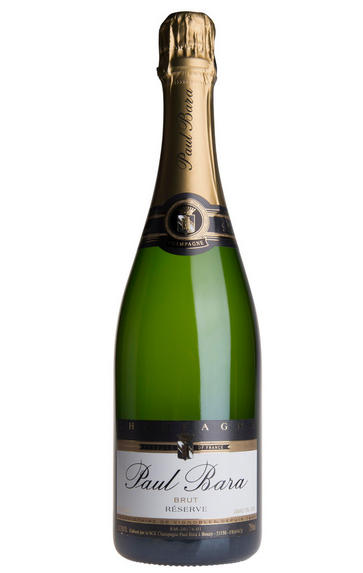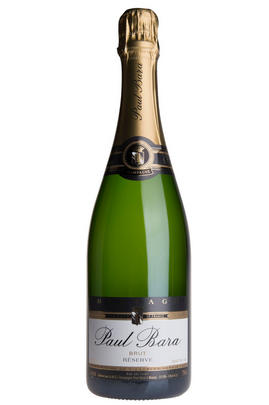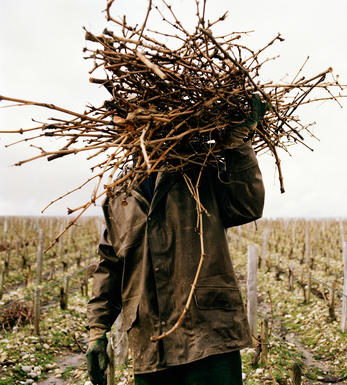
Champagne Paul Bara, Brut Réserve, Grand Cru

Critics reviews
Pierre Rovani - 28/10/2000
Jane MacQuitty The Times - Last-minute festive vintages – 19-Dec-09
About this WINE

Champagne Paul Bara
Chantale Bara has now taken over from the legendary Paul, her father, to ease the Champagne House of Bara in to its seventh generation.
Established in 1833, La Maison Bara has built a reputation as the great ambassador for the champagne village of Bouzy, including its famous red wines. All of its 11 hectares are situated within this famous Grand Cru commune.
The house style is accordingly generous and rich, the tirage taking place over a minimum of four years in the 100 year-old cellars, dug 36 feet under the property. The champagnes are colourful and rich, voluptuous and honied, yet always finely balanced and pleasingly textured.

Brut Champagne
Brut denotes a dry style of Champagne (less than 15 grams per litre). Most Champagne is non-vintage, produced from a blend from different years. The non-vintage blend is always based predominately on wines made from the current harvest, enriched with aged wines (their proportion and age varies by brand) from earlier harvests, which impart an additional level of complexity to the end wine. Champagnes from a single vintage are labelled with the year reference and with the description Millésimé.
Non-vintage Champagnes can improve with short-term ageing (typically two to three years), while vintages can develop over much longer periods (five to 30 years). The most exquisite and often top-priced expression of a house’s style is referred to as Prestige Cuvée. Famous examples include Louis Roederer's Cristal, Moët & Chandon's Dom Pérignon, and Pol Roger's Cuvée Sir Winston Churchill.
Recommended Producers : Krug, Billecart Salmon, Pol Roger, Bollinger, Salon, Gosset, Pierre Péters, Ruinart

Champagne blend
Which grapes are included in the blend, and their proportion, is one of the key factors determining the style of most Champagnes. Three grapes are used - Pinot Noir, Chardonnay and Pinot Meunier.
26% of vineyards in Champagne are planted with Chardonnay and it performs best on the Côtes des Blancs and on the chalk slopes south of Epernay. It is relatively simple to grow, although it buds early and thus is susceptible to spring frosts. It produces lighter, fresher wines than those from Burgundy and gives finesse, fruit and elegance to the final blend. It is the sole grape in Blancs de Blancs, which are some of the richest long-lived Champagnes produced.
Pinot Noir accounts for nearly 40% of the plantings in Champagne and lies at the heart of most blends - it gives Champagne its body, structure, strength and grip. It is planted across Champagne and particularly so in the southern Aube district.
The final component is Pinot Meunier and this constitutes nearly 35% of the plantings. Its durability and resistance to spring frosts make the Marne Valley, a notorious frost pocket, its natural home. It ripens well in poor years and produces a soft, fruity style of wine that is ideal for blending with the more assertive flavours of Pinot Noir. Producers allege that Pinot Meunier lacks ageing potential, but this does not deter Krug from including around 15% of it in their final blends.


Buying options
Add to wishlist
Description
Chantale Bara has now taken over from the legendary Paul, her father, to ease the Champagne House of Bara into its seventh generation. Established in 1833, La Maison Bara has built a reputation as the great ambassador for the Champagne village of Bouzy. The Champagnes are colourful and rich, voluptuous and honeyed, yet always finely balanced and pleasingly textured.
The reputation of Bouzy resides in the quality and style of its Pinot Noirs, generally ripe, rich and very expressive. All three of these adjectives apply to this, the signature wine from Champagne Bara: a charming, forward Champagne, with a nose evocative of nectarine, plum and spice, then delicious flavours in the mouth which combine ripe fruity notes, a very fine mousse and an elegant, finely sculpted finish.
Paul Bara is a legend in Champagne. He took over the firm as a teenager 60 years ago and remembers every vintage in perfect detail. He belongs to the sixth generation to run the company since it was founded in 1833. Many major champagne houses have approached Bara over the years to try to buy the 30 exceptional locations he controls in the village...Despite the traditional methods, Bara's wines have a very elegant fruitiness, which is unique in Bouzy.
Juhlin's Champagne Guide, 2008
wine at a glance
Delivery and quality guarantee